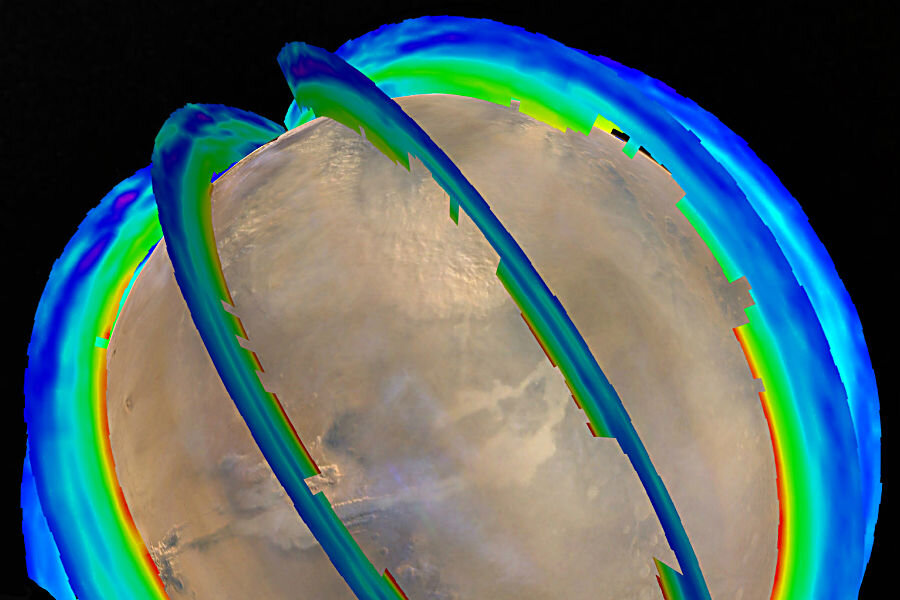NASA finds a better way to investigate Martian dust storms
Loading...
After endeavoring for decades to track Martian dust storms, a new method of analysis may be the clearest yet to aid scientists in discerning patterns in the recurring meteorological events on the Red Planet.
The National Aeronautics and Space Administration (NASA) this past week announced its findings that monitoring atmospheric temperatures above Mars illustrates dust storms' patterns better than observing imagery of the actual dust.
"When we look at the temperature structure instead of the visible dust, we finally see some regularity in the large dust storms," said NASA Jet Propulsion Laboratory Mars Reconnaissance Orbiter instrument scientist David Kass in an agency release. Mr. Kass was also the lead author of a study recently published in Geophysical Research Letters concerning the seasonal storms.
Kass went on to say that the new discovery could further researchers' grasp on how the Red Planet's climate and its tempests relate.
"Recognizing a pattern in the occurrence of regional dust storms is a step toward understanding the fundamental atmospheric properties controlling them," he said. "We still have much to learn, but this gives us a valuable opening."
The new information was relayed to NASA from data taken by insturments on its Mars Reconnaissance Orbiter (MRO), in orbit above the planet since 2006, and the now-lost Mars Global Surveyor, which orbited Mars from 1997 to 2006.
The results showed a variety of storms occurring on Mars across the years of study, ranging from many localized events to global storms that can encircle the planet. While those all-encompassing storms only occurred twice since 1997, the same types of three regional storms occurring in the years without a "big one" could be observed.
The researchers named the storms in the seasonal series Types A, B, and C. Type A storms start in the north and move to encircle the south during its spring season, while Type B storms form near the south pole during that hemisphere’s summer. The Type C events begin after B storms end, beginning in the north during winter – southern summer – and move south similar to A storms, but with more characteristic variations.
An interesting temperature effect of the storms is the sun's warming of the dust and, in turn, the air around it. This can affect wind speeds and therefore the extent of the storm, allowing bigger storms with more dust coverage to influence heat and winds even more. NASA found variances of up to 63 degrees F., between dusty and clear air during storms.
NASA scientists hope to glean as much information as possible about the planet ahead of its planned crewed Mars mission expected to take place in the 2030s. With more information about Martian atmospheric conditions and seasonal patterns, NASA can better prepare its staff for a potential life on the rocky planet.
The strength of the storms is not as big a concern for future Red Planet astronauts as is commonly assumed, though. In reality, the dust storms are usually less than half as strong as hurricanes on Earth and, according to NASA, Mars' strongest dust storms produce winds of up to 60 miles per hour. While still strong, those storms would feel lessened because of the thin Martian atmosphere that is 1 percent as dense as Earth’s.
"The key difference between Earth and Mars is that Mars' atmospheric pressure is a lot less," Goddard Space Flight Center physicist William Farrell explained in a NASA release. "So things get blown, but it's not with the same intensity."
So the storms would not be nearly strong enough to lead to the type of shipwreck documented in fictional works like "The Martian," among others. But one real concern for NASA's Mars missions would be keeping solar-powered equipment operational during dust storms, which would block rays from the Sun – a problem already faced by the space agency's Spirit and Opportunity rovers, according to Goddard scientist Michael Smith.








